All About Bread Making At Home

Early Days Of Bread Making
Man has been making bread of some sort since the end of the last ice age. The earliest breads were undoubtedly crude, unleavened loaves baked on hot stones or in beds of live coals. It is believed that the first raised breads were made in the Near East, where grains containing enough gluten to raise dough were plentiful.
The first raised bread probably came into existence by accident. A baker may have used leftover dough that had begun to ferment, and the fermentation caused the bread to rise. Bread first became prevalent in ancient Egypt. A surviving papyrus describes no less than 30 different kinds of bread baked by the Egyptians, who used bread instead of money to pay their workers and offered bread as a sacrifice to the gods.
Religion And Bread
Other civilizations also used bread in religious ceremonies. Major religious cults developed around Demeter and Ceres, the Greek and Roman goddesses of grain. The Jews used matzo, or unleavened bread (the most ancient bread of the Hebrews), as “the bread of affliction” in celebrating the feast of Passover, and Christians brought new significance to the Passover bread in the Sacrament of the Eucharist.
By the beginning of the Christian Era bread making had spread to all parts of the known world, including China. Generally, the nobles ate breads of finely milled wheat, while the poor ate coarse breads. In the New World the Indians ate unleavened corn bread, such as the Mexican tortilla, because they had no grains suitable for raised breads. But Columbus brought wheat to the New World in 1493, and wheat bread became widespread.
Today, bread making is important in most of the world’s cultures. In the West it is considered not only a type of food but a symbol for food itself.
The Basics of Baking Bread
Bread is made of moistened flour, salt, and yeast. Yeast is a living organism that rapidly ferments the sugar it derives from the starch in the flour, releasing carbon dioxide gas, which permeates the moistened flour. Flour contains a protein substance called gluten. The gluten forms an elastic network in the dough that holds in the carbon dioxide and makes the dough rise. The salt strengthens the gluten and inhibits the action of the yeast, preventing the dough from rising too fast. There are more tips here on this link: Home Baking Assocation
Making the Dough
For the bread making, dissolve the yeast in warm water, mix it thoroughly with the other ingredients, and knead the mixture into a somewhat elastic dough. Put the dough into a bowl, cover it, and leave it in a warm, draft-free place until it rises to double (or in some cases more than double) its bulk.
This may take several hours. Deflate the risen dough and form it into loaves, let the dough rise again, then bake the risen loaves. Some dough must be left to rise a second time before they are shaped into loaves, then left to rise a third time, and baked. Allow the baked bread to cool thoroughly, then wrap it in airtight plastic for storing. If you wish, you can freeze it for later use.
Most breads are left to rise at a temperature of about 80 degrees F (26.6˚ C), but some breads should rise at about 70 degrees F (21˚ C). Although this cooler temperature slows the rising, it allows the bread to fullv develop its texture without souring. You can delay the rising of any bread by placing it in a cooler place – even the refrigerator. You can also freeze the dough before any of its risings for up to 10 days and continue preparing it after it is thawed.
Although the entire process of bread making takes hours, you are busy with the bread for less than half an hour. During the long rising periods you can attend to other tasks or relax.
Equipment and Supplies
Very little equipment is required for bread making. Aside from a thermostatically controlled oven, all you need are a few utensils, a bowl, baking pans, and the ingredients called for in the recipe.
Now For Something Completely Easy – Bread Makers!
Equipment Needed to Make Bread
The most important piece of equipment for bread making, besides the oven, is a bowl to hold the dough while it is rising. The bowl should have a capacity equal to at least three times the amount of flour called for in the recipe you are using. The sides of the bowl should be fairly straight – not too sloping – to help push the rising dough upward instead of letting it spread outward.
You may also need a pastry scraper a rectangular piece of stainless steel with a handle running along one of its long sides. The pastry scraper is used to lift dough that are especially sticky in the early stages of kneading. A wide spatula can be used in its place.
Depending upon the type of bread you are making, you will need either a large cookie sheet or bread pans. You can get special bread pans or use metal, glass or foil meatloaf pans. The dough should fill the pan two-thirds full. If the pan is too large, the loaf will be a little flat; if it is too small, the dough may spill out over the sides. Breads in unusual shapes may call for special pans.
Bread Baking Pans Are Very Important
For most breads you will need only a few further miscellaneous items. These include a pastry board or large chopping board to use as a kneading surface, a rubber scraper or a mixing spoon, and measuring cups and spoons.
For French bread you will also need a spray bottle or atomizer filled with water, a baking pan, and a lame – a metal tool with a razor-sharp point – or a single-edged razor blade for cutting slashes into the loaves before baking them. Special French bread pans are available for holding the shaped loaves during the third rising and the baking. These pans consist of two or more half cylinders that form troughs for holding the loaves.
If you have no special pans, you can place the loaves on a floured canvas pastry cloth for rising and bake them on a large cookie sheet.
If you plan to do a lot of bread making, you may want to get a heavy-duty table-model electric mixer with a dough hook attachment. The dough can be kneaded by placing it in the mixing bowl and letting the dough hook do all the work. Special bread pails with detachable dough hooks are also available, but these must be cranked by hand.
Bread Ingredients
The basic ingredients in bread are flour, water or milk, yeast, salt, and sometimes sugar. Other ingredients that may be used include eggs, seeds, fruits, and nuts. White wheat flour is the flour most widely used in breads. It is made from the starchy core of the wheat kernel. The bran (the coarse outer layer of the kernel) and the oily germ of the kernel (which spoils rapidly) produce coarser doughs and so are discarded.
There are three basic types of white flour: bread flour, soft white flour, and all-purpose flour. Bread flour is high in gluten, the part of the flour that creates an elastic network in the dough and holds in the carbon dioxide formed by the yeast to make the bread rise. Soft wheat flour is low in gluten and is generally used only in crackers, pretzels, and pastry. All-purpose flour is a combination of the two.
There are also innumerable other types of white flour, such as self-rising and instant granulated flours, which contain additives or are designed for special uses or diets. Although bread flour is ideal for bread making, it is difficult to find for home use. Unbleached all-purpose flour is preferable; however, bleached flour can also be used.
Wholewheat flour and rye flour are also called for in some recipes. Wholewheat flour is made from the entire wheat kernel, including the bran and the oily germ. Rye flour is made from the rye grain. Cornmeal can also be used in breads.
Yeast comes in two forms: in compressed cakes and in powdered form. Both are equally efficient. One 2/3-ounce cake of compressed fresh yeast is equal to a single packet or 1 tablespoon of active dry (powdered) yeast. However, cake yeast spoils quickly and must be refrigerated or wrapped airtight and frozen. It will keep about a week in the refrigerator or for several weeks in a freezer.
When fresh, cake yeast is uniformly gray with no discolored spots.
Most powdered yeasts have an expiration date stamped on the packet. Be sure to use the yeast before this date. If you suspect that the yeast may be too old, dissolve it in the warm water called for in the recipe and stir in a tablespoon of flour and a pinch of sugar. If the yeast is still good it will begin to foam and increase in volume in about 8 minutes.
Never put yeast into water that is hotter than 100˚ F (37˚ C). Yeast is a living organism, and excessive heat will kill it. To test the temperature of the water, sprinkle a few drops of it on the inside of your wrist. If it feels warm but not hot, the temperature is correct.
How to Make French Bread
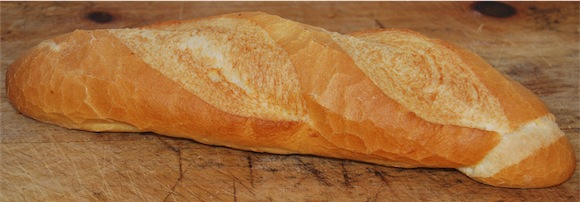
French bread is made only of flour, water, salt, and yeast. French bakers were traditionally forbidden by law to use anything more.
The ingredients are kneaded into a light, sticky dough and left to rise three times in a draft-free place that is around 70˚ F (21˚ C). The third rising takes place after the loaves have been shaped. It is important that this final rising take place in a fairly dry location, or the loaves may stick to the surface on which they are rising. Before the loaves are baked, they are slashed in several places to allow the dough to bulge up from underneath during baking and create a decorative pattern.
To make three fat 15-inch-long loaves you will need: 1 cake fresh yeast or I packet powdered yeast, 1/3 cup warm water (it should be about 100˚F (37˚ C), ), 3 and a half cups all-purpose flour, 2 teaspoons salt, and 1 and a quarter cups tepid water. You will also need cornmeal for spreading under the loaves to keep them from sticking and a small supply of extra flour.
Traditional bakers in France still use brick ovens that are shot full of steam during the first half of the baking time, giving the bread its crisp brown crust. The home baker must put a pan of boiling water into the bottom of the oven during the first half of the baking time. Although this procedure may not produce as brown a crust as a real baker’s oven, the bread will taste as good.
>
This is a really easy and a foolproof recipe for baking bread at home:
>
Reference: Readers Digest Crafts & Hobbies – A Step-by-Step guide to Creative Skills.
& TouTube.

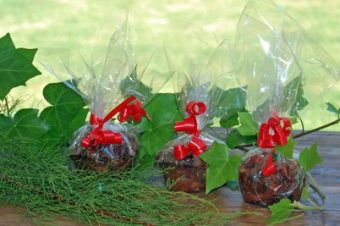
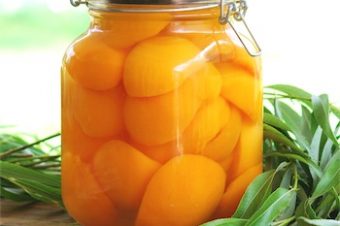
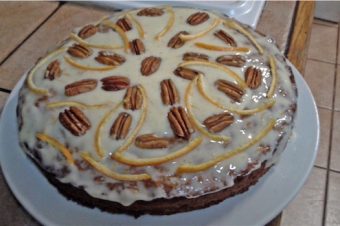
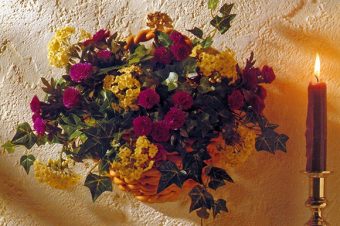

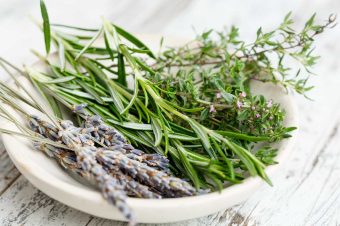
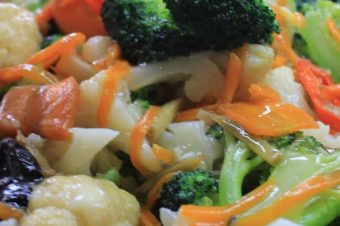
6 Responses
Breadmaking Books - Crafting DIY
[…] no-knead yeasted batter bread, an old-time favorite that is sure to become popular with home cooks who would love to make bread but think they don’t have time. Since recipes for this kind of bread are a rarity today. […]
Janek
What we have done is to crush a few garlic cloves, put in as many to suit your taste, with a garlic press and mix it together with real butter. You can warm the butter up if it is too cold and soften it, do not melt the butter. Yum!
Marlon P
What is the mixture you put on italian bread to make garlic bread? I know it’s some kind of spread, or sauce.
The Inc
want to make a new kind of sandwich , but i can’t till I know how to make this bread
jordenkotor
I am new to bread making over and above this a tad confused: I have a few packs of dried active yeast which states it ought to be activated inside water in addition to glucose before using, ok thats alright.
However, I have a recipe which explains:
“Heap the flour on to a clean surface,then make a small crater inside the center. Pour half the water into the crater, then include the yeast, glucose, then add salt then mix with a fork.”
So do I need to activate the yeast first or do I put the ingredients all together at once?
fattiemanny
This sounds like a strange query! Haha my father has really started to become interested to start bread baking. His birthday is shortly and I wish To purchase him anything bread connected to get him started…if which makes sense! He has bread tins and speciality flours in addition to an actual bread machine! Any tips??